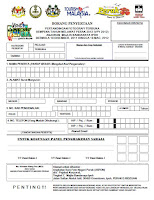
The Ipoh Tree
The development of Ipoh administration is closely related with its administration area. This can be seen from its history that elevated its status to become a city and the state capital for Perak Darul Ridzuan. Ipoh was initially a transit place and an important business centre for the surrounding areas. The word ‘Ipoh’ is believed to originate from the word ‘Upas’. The white people called it ‘Epu’ while the Chinese pronounced it as ‘Ipoh’ or ‘Paluh’. Until 1880’s, Kinta River was the main transportation link between Ipoh and other areas, whether within or outside Perak. After 1874, Kinta did not progress much due to the transportation problems, as sampans, elephants and bullock carts were very slow. In 1884, roads were built to connect Gopeng village and the port in Kota Bharu and connecting the mining area in Papan and Batu Gajah.
Before 1889, a hospital was already built in Ipoh while a new hospital was built in the area between the train station and Central Police Station in 1889-1890. In 1893, more than half of the thatch-roofed houses were pulled down and replaced by brick buildings, and drainage systems were improved. Roads were reorganized and shade trees were planted. In this year too, Ipoh Sanitary Board was set up and it was responsible for the cleanliness level in Ipoh. In 1895, the first English Lower Secondary school was built and was known as Anglo Chinese Boys School. Thus, Ipoh became the largest town in Perak and the second largest in the Federated Malay States in 1895. At the same time, the road links between Ipoh and other places in Kinta Valley were improved. The wooden bridge crossing Kinta River was replaced by a steel bridge in 1900.
Services and public facilities were provided. In 1898, the sewerage system was built, followed by the use of septic tanks in 1905. The first field was opened in 1898, which is now known as Ipoh Field.
Perak Race Club was set up in 1904, and in 1909, ‘Peoples’ Park’ and a special area were built to commemorate J.W.W Birch (James Wheeler Woodford Birch). Between 1905 and 1914, Ipoh town administrative area expanded across the Kinta River, reaching Andersen Road. Thus a new town grew, known as Ipoh New Town. Train station, hotel, town hall and post offices were built, as well as cinema. Motorised vehicles were also introduced in Ipoh at this time. Bus services began in 1910 and 1911, and the Motorised Vehicle Registration Office was established in Ipoh. In 1905 – 1915, Kinta Sanitary Board North was set up, followed by Kinta District Board in 1916 – 1941. This was headed by A.S. Jelf under the administration of the British Military Administration.
In 1946 -1954, Kinta Town Board was established under the coordination of Major J.S. Drake, followed by G.S. Walker who became the chairman in the years 1954 – 1956. Ipoh Menglembu Town Council was set up in 1957, and Encik Abdullah Bin Uni headed the council until 1962. On 31 May 1962, Ipoh was upgraded into a municipality and was known as Ipoh Municipal Council, chaired by E.G. Walker. On 27 May 1988, HRH Paduka Seri Sultan Perak Darul Ridzuan declared Ipoh as a City, State Capital of Perak Darul Ridzuan. Ipoh Municipal Council is now known as Ipoh City Council, and its chief executive is called Mayor. As the state capital, Ipoh is the administrative, commercial, sports, cultural, financial, political, religious, and educational centre. Thus, under the current Mayor leadership, Ipoh City Council will continue to make Ipoh a dynamic and prominent city.












